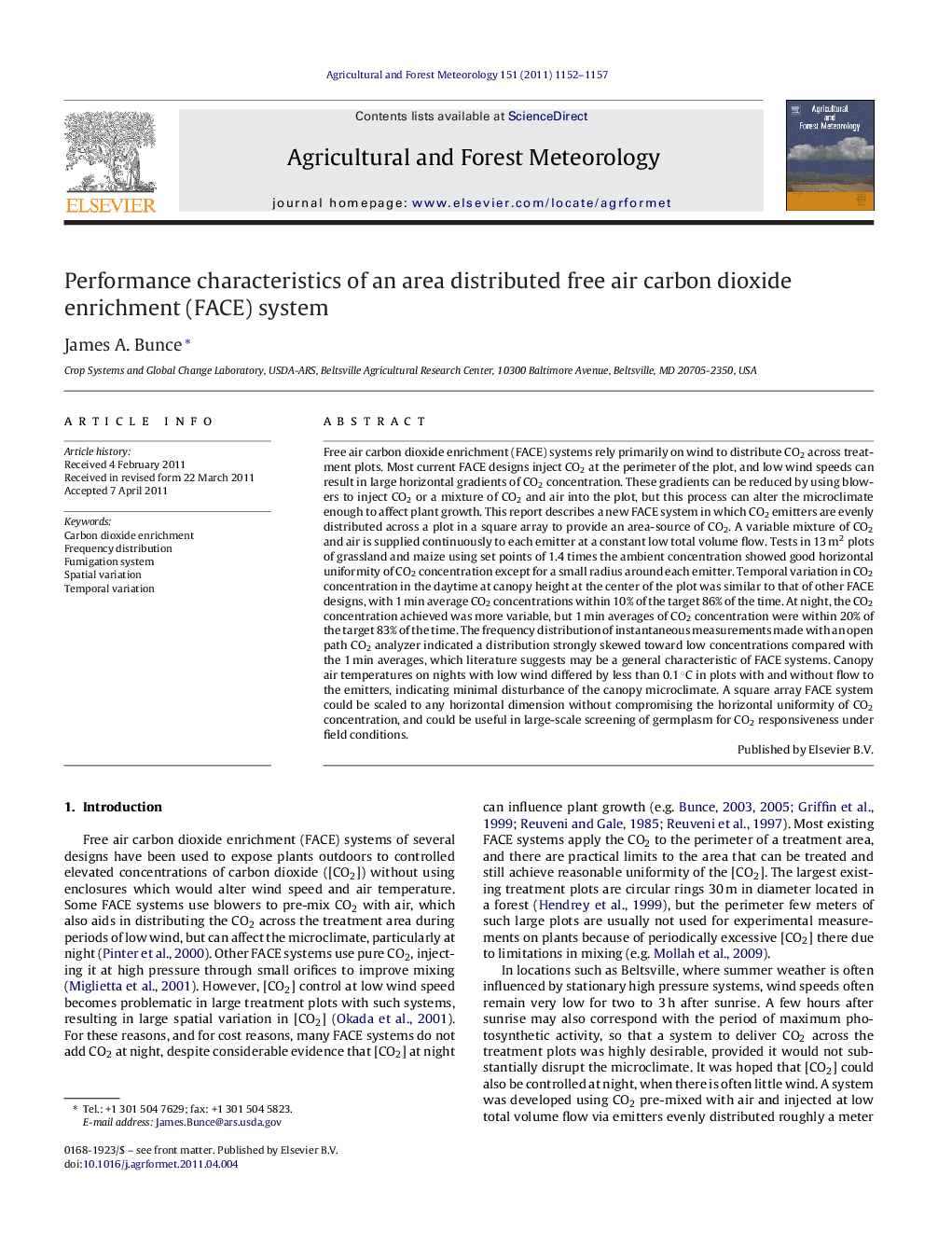| Article ID | Journal | Published Year | Pages | File Type |
|---|---|---|---|---|
| 82127 | Agricultural and Forest Meteorology | 2011 | 6 Pages |
Free air carbon dioxide enrichment (FACE) systems rely primarily on wind to distribute CO2 across treatment plots. Most current FACE designs inject CO2 at the perimeter of the plot, and low wind speeds can result in large horizontal gradients of CO2 concentration. These gradients can be reduced by using blowers to inject CO2 or a mixture of CO2 and air into the plot, but this process can alter the microclimate enough to affect plant growth. This report describes a new FACE system in which CO2 emitters are evenly distributed across a plot in a square array to provide an area-source of CO2. A variable mixture of CO2 and air is supplied continuously to each emitter at a constant low total volume flow. Tests in 13 m2 plots of grassland and maize using set points of 1.4 times the ambient concentration showed good horizontal uniformity of CO2 concentration except for a small radius around each emitter. Temporal variation in CO2 concentration in the daytime at canopy height at the center of the plot was similar to that of other FACE designs, with 1 min average CO2 concentrations within 10% of the target 86% of the time. At night, the CO2 concentration achieved was more variable, but 1 min averages of CO2 concentration were within 20% of the target 83% of the time. The frequency distribution of instantaneous measurements made with an open path CO2 analyzer indicated a distribution strongly skewed toward low concentrations compared with the 1 min averages, which literature suggests may be a general characteristic of FACE systems. Canopy air temperatures on nights with low wind differed by less than 0.1 °C in plots with and without flow to the emitters, indicating minimal disturbance of the canopy microclimate. A square array FACE system could be scaled to any horizontal dimension without compromising the horizontal uniformity of CO2 concentration, and could be useful in large-scale screening of germplasm for CO2 responsiveness under field conditions.
► A square array of CO2 emitters avoided large horizontal gradients in concentration. ► The system adequately controlled CO2 concentration even with low wind and at night. ► The system did not affect canopy air temperature. ► The system could be scaled to any horizontal dimension without compromising control.
